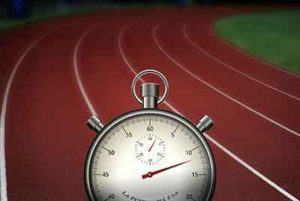 Most of you have likely heard of RPE – Rate of Perceived Exertion – at some point. Many of you may have even done some training or racing using it. But in this day where power meters, heart rate monitors, GPS watches and data analysis software are the norm; is there any room for a subjective measurement like RPE? Continue reading “RPE – A Lost Art?”
Most of you have likely heard of RPE – Rate of Perceived Exertion – at some point. Many of you may have even done some training or racing using it. But in this day where power meters, heart rate monitors, GPS watches and data analysis software are the norm; is there any room for a subjective measurement like RPE? Continue reading “RPE – A Lost Art?”
Category: Training
The Courage to Go Easy
 The single biggest training mistake I see triathletes make – beginners and veterans alike – is they don’t have the courage to go easy and end up going too hard on easy days. Continue reading “The Courage to Go Easy”
The single biggest training mistake I see triathletes make – beginners and veterans alike – is they don’t have the courage to go easy and end up going too hard on easy days. Continue reading “The Courage to Go Easy”
Know Your Sweat Rate

The first step in developing a proper race day fluid replacement plan begins with understanding your body’s true hydration requirements – knowing your sweat rate and understanding what it means. Continue reading “Know Your Sweat Rate”
Improving Ankle Flexibility
Improving your ankle flexibility can have a dramatic impact upon your swim splits by reducing the amount of drag created by your legs. If your feet “hook” when you swim they act like parachutes at the end of your legs and will slow you down. In extreme cases, the hooking effect can actually produce negative propulsion. Continue reading “Improving Ankle Flexibility”
When to Perform a Lactate Threshold Field Test

I received this email last night.
“. . . my training zones are from a field test I did two-years ago. At what point should I re-test? Should I be relatively “fresh” when I test? I lifted yesterday, and wrestling kicked my butt so I’m sore as heck. Wait till next week? Or does it not matter because it’s based on max effort?” Continue reading “When to Perform a Lactate Threshold Field Test”
How to Set Heart Rate Training Zones
Formulas aren’t accurate
If you have been training for any length of time, you have probably heard about ‘Training Zones.’
Do you know how to set your training zones? More specifically, do you know how to set your heart rate (HR) training zones? Continue reading “How to Set Heart Rate Training Zones”
Supercompensation
The human body strives to maintain homeostasis; a fancy term for balance. To maintain homeostasis, the body continually adapts to its environment. Training is simply the manipulation of the application of stress and the body’s adaptation to the stress in order to maintain a state of homeostasis. Continue reading “Supercompensation”
